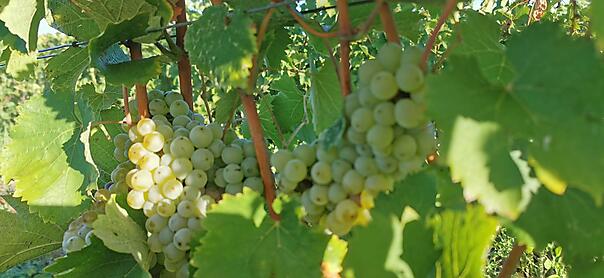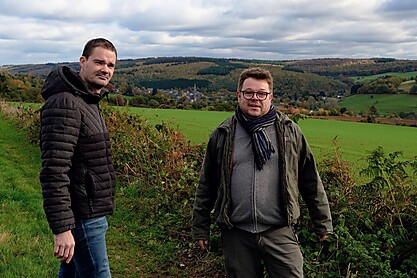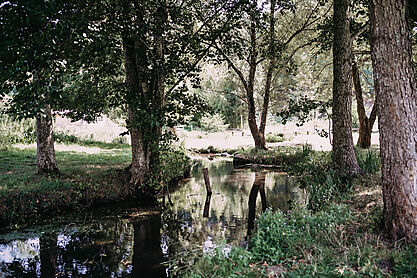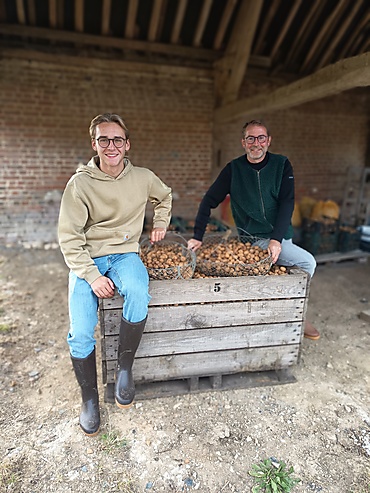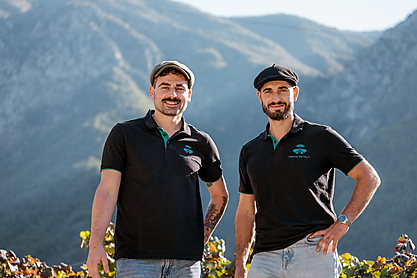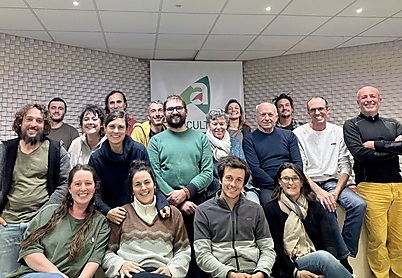Régénérer les sols avec l'aquaponie : le modèle Blue Soil
par
Céline BASSET

Don avec contrepartie
Un outil de transition pour produire et revivifier. Déjà expérimenté au Vietnam et en Birmanie, Céline régénère les sols grâce à l'aquaponie
Auvergne-Rhône-Alpes
Dieulefit, France
52
Contributeurs
5 600 €
Projet financé !
Le 22 mars 2020
English version
Hello my name is Céline. I have experienced a solution to revitalize the soil using aquaponics the last past years in South East Asia. This is a whole model that takes place in 3 stages on a time continuum.
What is it about?
-
In the short term: Step 1
We set up a small scale (100m2) aquaponics system to multiply the production lines (vegetables, fruits and fish) and multiply the incomes. As a transitional tool, this system allows the soil ecosystems to take the time to regenerate while ensuring food security for everyone. We therefore ensure local food resilience.
-
In the medium term, Stage 2
Soil microbiology is revived thanks to the aquaponics liquid (innovative). It is a kind of plant probiotype that helps in the revitalization of soil bacteria.
-
In the long term, Step 3
We combine the methods of the permaculture, agroecology, agroforestry and biodynamics whose regeneration cycles are taking longer.
STEP 1: SO WHAT IS AQUAPONICS ?
It is a soil-less culture that is around 5000 years old. It is native from Mesoamerica and South East Asia. It combines 3 ecosystems: Fish farming, Bacteria culture and Culture of Plants in water that circulates in a closed circuit.
Fish wastes are transformed into nutrients by bacteria. These nutrients circulate into the water and are absorbed by the roots of the plants that filter water.
It is a kind of phyto-purification ... but edible.
In a non-food setting, there are possibilities to clean up rivers by cultivating botanical species adapted to pollution.

STEP 2 : REVIVIFY THE SOIL WITH AQUAPONICS? A PATENT IN PROCESS
Today the soils are degraded, polluted, their fertility is in danger and our food security also according to the IPCC report of 08/09/2019. Scientific studies show that it takes 5 to 10 years to restore these soils. The cycles of regeneration of nature are not set on the cycles of humans. There is therefore a gap between the biological reality of the soil and our desire for food self-sufficiency.
This is where step 2 of the model is innovative! Because I use aquaponics as a remedy to cure soils. The aquaponics liquid revitalizes the dead soils while allowing to quickly produce vegetables, fruits and fish.

The feedback and the solicitation of certain structures led me to file a patent in 2019 in order to channel and preserve the circulation of this know-how in the interest of the Collective. So I refused funding in order to maintain my ethics and intellectual integrity.
Independence is a difficult choice and your donations are precious!
STEP 3 : INTEGRATE PERMACULTURE, AGROECOLOGY, AGROFORESTRY AND BIODYNAMICS
This step is for the long term. Agroecology and permaculture give results from 5 to 7 years of practice and the benefits of the establishment of agroforestry systems are beyond 10 years.
The use of these methods is essential because they are complementary to steps 1 and 2 and constitute the long-term natural regeneration cycles in the integrated system.
If we are now in a desert steppe agriculture, the sustainable agriculture of tomorrow will be around the trees which are the guardians of the water cycle and the structure of fertile soils.

THE PROJECT
It requires a greenhouse, an aquaponics system, photovoltaic panels, a traditional market gardening area and great motivation !
THE GREENHOUSE
This project has already been carried out in Vietnam and Burma. It was here at Dieulefit that I started setting up the prototype farm.
The earthwork area will accommodate a BIOCLIMATIC greenhouse of 75m2 in wood and alveolar polycarbonate so that it can keep a temperature above 11 ° c t and welcome the aquaponics system.
Without foundation or concrete we recycled tires to develop the north and south facades
It has a Canadian well for geothermal ventilation.
This recycled tire method stores heat from the sun during the day and then re-diffuses it at night.

The photovoltaic panels will power the submersible and oxygen pumps of the aquaponics system. They will be located at the foot of the greenhouse for more efficient maintenance.
The aquaponics system will produce 400 polyculture plants.
AQUAPONICS
The aquaponics system will be equipped with a 4000L fish tank, swirl filters, bacteriological filters and a culture bed in pipes where 400 plants will grow.
Within the framework of the model, the aquaponics system will serve to ensure local food autonomy while regenerating the 2500m2 of market gardening on living soil of the micro-farm.
Bacteriological soil tests will be carried out over a whole year.

YOUR DONATIONS WILL BE USED TO FINANCE
The idea is that this transient system is also self-sufficient in terms of energy:
1. Photovoltaic panels required to supply electricity to the submersible pump and the oxygen pumps of the aquaponics system without being dependent on nuclear energy. No LED
Quote between € 9,000 and € 13,000 (€ 3 / Watt installed, € 1,000 per m2)
2. Polycarbonate sheets which will be used for the bioclimatic greenhouse
3. Payment for 2 soil microbiology tests at 2 different times (before / after)
Bacteriological analysis of soil or substrate without a priori and Targeted bacterial count on soil or substrate: € 2,150
4. The 9.6% HT required to finance MiiMOSA
Contreparties
Pour 10 euros ou plus
Merci !
Toutes les aides sont les bienvenues !
Pour 20 euros ou plus
5 sacs de graines locales...
... et l'apéro à la ferme !
Disponibilité
juin 2020
Livraison
À retirer sur place
Choisie 8 fois
Pour 30 euros ou plus
Parrainez une ligne + 5 sacs de graines
Une ligne du potager portera votre prénom.
Choisie 10 fois
Pour 50 euros ou plus
1 heure de cours en ligne face-to-face
... et l'apéro à la ferme si tu passes dans le coin !
Disponibilité
juin 2020
Livraison
À retirer sur place
Choisie 7 fois
Pour 100 euros ou plus
2 heures de cours en ligne sur l'aquaponie
Les fondamentaux de l'aquaponie seront abordés.
Pour 150 euros ou plus
Woow ! 3 heures de cours en ligne
Sur comment cycler un système d'aquaponie.
Disponibilité
juin 2020
Livraison
À retirer sur place
Choisie 1 fois
Pour 250 euros ou plus
Une journée à la ferme
... du Breakfast à l'apéro ensemble pour co-kiffer. Visite de la micro-ferme et explications sur l'objectif autonomie alimentaire des territoires dans le cadre de ma collaboration avec SosMaires
Disponibilité
juillet 2020
Livraison
À retirer sur place
Choisie 1 fois
Pour 400 euros ou plus
Un atelier technique sur l'aquaponie
....prévois ta journée et ta soirée.
Choisie 2 fois
Pour 650 euros ou plus
Deux jours et une nuit dans la ferme
Le but est l'immersion dans un quotidien qui nécessite la gestion des animaux, des plantes, des mesures de l'eau, du sol, du calendrier des semis, et des récoltes. Apéro sonores pour danser et rencontres les co-kiffeurs du coin.
Disponibilité
juillet 2020
Livraison
À retirer sur place
Choisie 1 fois
Pour 1 000 euros ou plus
Séjour Intensif à la ferme (7 jours)
Avec des formations et ateliers sur le cycle de l'eau, la biodynamie, l'agroécologie et le procédé sous dépôt de brevet pour régénérer les sols Prévois ton hammac, il y a des endroits secrets dans la colline et des nuits sonores à vivre en pleine Nature.
Disponibilité
août 2020
Livraison
À retirer sur place
Don libre
1
Sélectionnez un projet
en fonction de la thématique, de sa localisation ou des contreparties.
2
Choisissez une contrepartie
et ajustez si vous le souhaitez le montant de votre contribution.
3
Recevez vos produits
ou profitez des séjours et expériences que vous avez choisis.
4
Partagez votre expérience
sur les réseaux sociaux @miimosa_fr pour continuer de soutenir le projet et son porteur.
